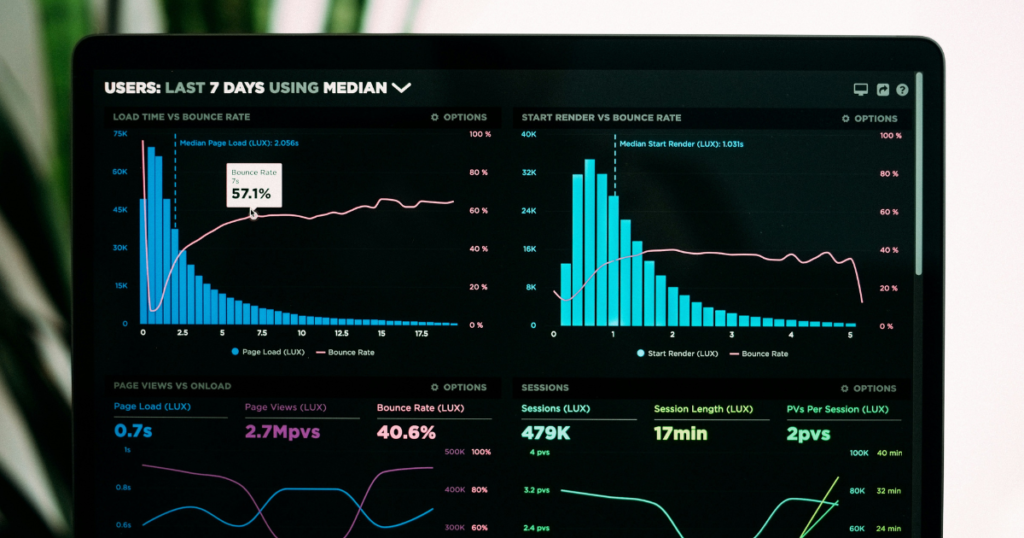
In the fast-paced world of startups, growth is more than just a goal; it’s what keeps you in business. However, how can you know if your company is growing in the right way? Imagine driving without headlights in the dark. You’re moving, but you have no idea where you’re going. Running a startup without tracking growth is similar to this situation. It might seem you are working, but without accurate data, it’s difficult to know whether your efforts are actually leading to success.
This is where startup analytics tools become essential. By transforming raw data into insights, they will assist you in identifying areas of success, areas for improvement, and areas for scaling. In this article, we’ll discuss the tools you can use to assess your growth and make data-driven decisions that help you scale smarter and faster.
Why Tracking Growth Goes Beyond Revenue
Tracking growth isn’t just about seeing revenue rise; it’s about understanding what’s driving that growth. Whether you’re looking at how many customers you’re gaining, how engaged they are, or how long they stick around, these analytics tools give you clear, actionable insights.
These startup analytics tools will help you pinpoint what’s working and what needs adjustment so that you can focus your energy and resources wisely. By tracking and measuring growth, you will make smarter decisions, avoid costly mistakes, and set your startup on a path to long-lasting success.
8 Best Analytics Tools for Startups
Selecting the appropriate analytics tools is important for effectively growing your startup. In this section, we’ll highlight 8 best analytics tools that offer insightful information to help you track progress, improve strategies, and maintain your competitive edge in the startup industry.
1. MixPanel
MixPanel is a highly effective analytics tool that offers insightful information to large companies, SMEs, and startups. It simplifies workflows, seamlessly connects data, and provides detailed analytics on user behavior, such as demographics, location, and engagement. Its group analytics tool is especially valuable for B2B companies, offering detailed data on engagement and retention. With a scalable infrastructure, MixPanel supports businesses of all sizes, from startups to tech giants like Uber and Skyscanner, making it an ideal choice as your business grows.
2. Amplitude
Amplitude is another strong analytics tool based in California that was created for startups. It has served more than 1,400 customers globally. However, it is an important tool for companies looking to safeguard and enhance their digital operations. It also facilitates seamless alignment, control, and integration. It offers up-to-date information on user activity, including trends in revenue, funnels, segmentation, and retention.
3. Google Analytics
Companies use Google Analytics as a popular tool to track website and project performance. Google introduced this user-friendly tool in 2005, you only need to incorporate the Google Analytics code into your project. Businesses such as Dropbox and Slack utilize it due to its ability to provide valuable information, such as keyword referrals, which aids them in targeting the appropriate audiences.
Its customized reports offer full details on customer behavior, demographics, and geography, making them a crucial tool for performance optimization and user engagement analysis.

4. CleverTap
Over 10,000 brands, including Nykaa, MX Player, and PharmEasy, trust CleverTap as a top mobile marketing and customer interaction platform. It is well-known for its outstanding user experience and retention capabilities. CleverTap provides real-time audience segmentation and tracks user behavior according to action, inactivity, or previous history. It can disseminate 2.6 billion messages daily and monitor extensive data.
Additionally, startups specializing in mobile apps find it ideal. It is an excellent option for spotting patterns and accelerating growth because of its advanced features, which include pattern identification through cohorts, funnels, and insights.
5. Kissmetrics
Kissmetrics was Introduced in 2010, it is a well-known analytics tool, especially for companies transitioning from Google Analytics. More than 10,000 companies, such as Microsoft, Lucidchart, and SendGrid, trust it because it provides insightful marketing data. It’s perfect for eCommerce and lets companies monitor users’ behavior, sales, and revenue.
Additionally, it offers comprehensive reports on customer behavior, such as the number of people who click on the product and add it to their cart. Making it useful information for improving conversions and the company’s strategy.
6. Woopra
Woopra is also an effective product analytics tool for startups that provides detailed customer journey information and free signup. In order to track the entire user experience, it enables smooth user data syncing and gives startups detailed reports that include cohort analysis and retention metrics. Furthermore, Woopra can interface with more than 50 apps, providing companies with access to more advanced, precise data for improved decision-making.
7. Countly
Countly is a fantastic choice if you’re searching for a flexible analytics tool to help your startup. It provides private cloud and on-premises data tracking options. Additionally, their single dashboard allows companies to monitor multiple products simultaneously.
Furthermore, Countly offers useful plugins that can simplify a variety of activities, like surveys, funnels, hooks, and data management plugins. This can help you in managing and enhancing the effectiveness of your startup.
8. FullStory
FullStory is another effective analytics tool that provides both quantitative and qualitative data. Deep insights are facilitated by this tool, propelling business growth. Its user-friendly interface contains four types of cards: trend, funnel, text, and single-measure cards, making it simple to track important information.
Furthermore, FullStory provides smooth connections with programs like Slack, Salesforce, and Google Analytics. FullStory enables startups to enhance their data insights and streamline processes for more efficient decision-making.
There are Steps to Effectively Track and Measure the Growth of Your Company.
Following the right steps is important to truly understand how your company is growing and what changes are required. We’ll go over practical steps for measuring growth that are understandable, doable, and ultimately focused on growing your business.

Step 1: Review your Statement of Profit and Loss
The most straightforward method of measuring growth is to examine your profit and loss (P&L) statement. Compare your income from month to month or year to year.
Example:
- March 2021 Revenue = $15,000
- March 2020 Revenue = $10,000
- Year-over-Year Growth = ($15,000 – $10,000) / $10,000 * 100 = 50%.
Regularly comparing these figures lets you determine if your company is growing, stalling, or declining.
Step 2: Analyze Leading and Lagging Indicators
Leading indicators foresee future growth. They could consist of:
- Website Traffic: An increase in website traffic can sometimes lead to more sales.
- New Leads: The total number of newly added contacts to your CRM.
- Engagement Metrics: Include social media interaction and email open rates, among others.
If you’re looking to boost these metrics and turn engagement into tangible business growth, our Social Media Marketing services can help you create the traction your brand needs across the right platforms.
Lagging indicators confirm previous growth. They could consist of:
- Closed Sales: Profit from completed transactions.
- Profit Margin: Net profit calculated as a percentage of revenue.
- Rates of Customer Retention: The percentage of returning customers.
By tracking these indicators, you can gain a full understanding of your growth direction.
Step 3: Evaluate Acquisition and Retention of Customers
Customer Acquisition Cost (CAC) refers to the overall cost of gaining a new customer. This covers sales, marketing, and any other costs related to acquiring new customers.
Formula:
CAC = Total Marketing & Sales Expenses / Number of New Customers Acquired.
The Customer Retention Rate measures how successfully you maintain your customers over time.
Formula:
Retention Rate = (Number of Customers at End of Period – New Customers Acquired During Period) / Number of Customers at Start of Period) * 100.
Track these metrics to understand the effectiveness of your customer acquisition strategies and the loyalty of your existing customers.
Step 4: Analyze the Average Transaction Value and Frequency of Purchases.
Average Transaction Value (ATV)gives a clear picture of customer spending patterns by displaying the average amount spent by each customer on a transaction. By focusing on improving this metric, you can increase revenue per customer. As a result, improve your overall financial performance.
Formula:
ATV = Total Revenue / Number of Transactions.
Purchase frequency measures how frequently the same customers make purchases over a specific time frame. You can increase transaction frequency and provide a consistent flow of income by promoting customer loyalty and repeat business.
Formula:
Purchase Frequency = Total Number of Purchases / Total Number of Customers.
Increasing either of these metrics will have a direct influence on overall revenue growth.
Step 5: Track Attrition and Churn Rates
Attrition or Churn Rates are the percentages of customers who discontinue buying from you over time. High rates of attrition can have a big effect on growth.
Formula:
Churn Rate = (Number of Customers Lost During Period / Number of Customers at Start of Period) * 100
Understanding why customers leave can help you implement churn-reduction tactics, such as improving customer service or providing loyalty programs.
Step 6: Factor in Growth Costs
There is frequently a cost for growth. Make sure to include all of these costs in your growth strategy, whether they are related to marketing, employing additional employees, or purchasing new technology.
A company’s Cost of Acquisition Rate (CAR) indicates how much it costs to generate new revenue.
Formula:
CAR = Total Acquisition Costs / New Revenue Generated
The cost-effectiveness of your growth strategy can be assessed by comparing your CAR with the revenue generated.
Frequently Asked Questions
Final Notes
Tracking and measuring growth is not just necessary for companies; it is critical. Startup analytics tools help you in more than just tracking income but also provide insights, spot opportunities, and guide your company in the direction of long-term success. These startup analytics tools highlight your route to growth like headlights, whether you’re analyzing your customers or improving your strategies.
Startups can increase revenue, improve customer loyalty, and enhance conversions by utilizing these analytics tools.
Ready to scale faster? Check out our startup tools hub or book a free discovery call with our team to find the right tools and strategies tailored to your business.
Related Marketing Strategies

Startup Branding: Expert Tips on Branding Small Business

How To Market A SaaS Product: 10 Proven SaaS Marketing Strategies


